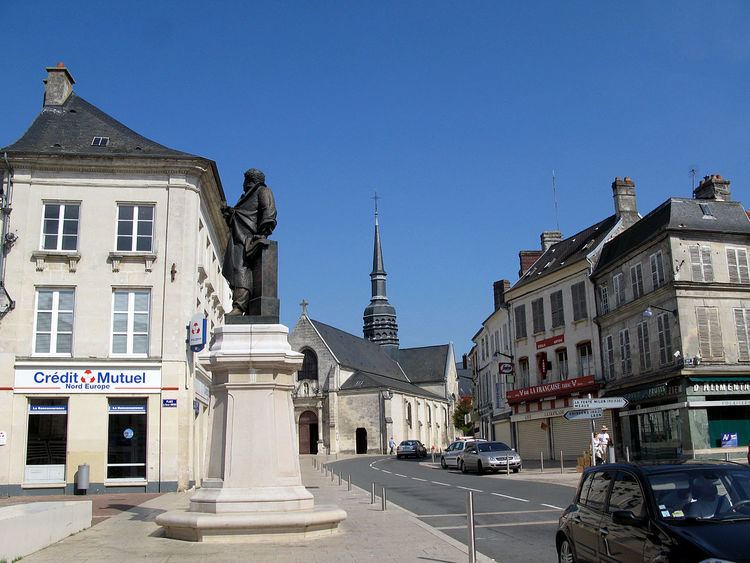Time zone CET (UTC+1) Population 10,090 (2007) Area1 41.71 km2 (16.10 sq mi) | Area 41.71 km² Local time Monday 5:55 PM Department Aisne | |
 | ||
Intercommunality Villers-Cotterêts–Forêt de Retz Weather 18°C, Wind N at 8 km/h, 43% Humidity | ||
Villers-Cotterêts ([vi.lɛʁ kɔ.tə.ʁɛ] [vi.le kɔ.tə.ʁɛ]) is a commune in the Aisne department in Hauts-de-France in northern France.
Contents
- Map of 02600 Villers CotterC3AAts France
- Geography
- History
- Population
- Notable natives and residents
- Sports
- Sights
- References
Map of 02600 Villers-Cotter%C3%AAts, France
Geography
It is located 80 km (50 mi) NE of Paris via the RN2 facing Laon. Its nickname Petite villa sur la côte de Retz means Little villa by the coast of Retz, as the town is situated next to the Forest of Retz, which covers 130 km2 (50 sq mi) of land.
History
Villers-Cotterêts is famous because of the Ordinance of Villers-Cotterêts of 1539 signed by king Francis I of France ('François Ier'), which made French the official language in the kingdom instead of regional languages like Occitan or the elite European lingua franca of the time, Latin.
In 1914, the British Expeditionary Force fought a rearguard action here during the Retreat from Mons. On 1 September, the British 4th (Guards) Brigade who were covering the withdrawal of 2nd Division, came into contact with the leading units of the German III Corps on the edge of woodland near Villers-Cotterêts. The brigade lost more than 300 men in the encounter, but were able to break away and continue the withdrawal. Many are buried at Guards' Grave, a military cemetery maintained by the Commonwealth War Graves Commission.
La Plaine Saint-Rémy, Pisseleux was an ancient commune that was merged with Villers-Cotterêts in 1971.
Population
The inhabitants are called Cottevreziens.
Notable natives and residents
Sports
The town was the start of Stage 4 in the 2007 Tour de France.
Sights
The original château was built around 950 AD and was burnt to the ground twice before being rebuilt out of stone in the early 12th century. The front entrance is the only original remaining structure, which is listed with the Historic Monument Registry at the École des Beaux Arts. Francis I purchased the château from the de Noüe family to house his mistress Anne de Pisseleu d'Heilly. The Château de Noüe was updated with 18th-century régence decoration by Gilles-Marie Oppenordt. The current owner is the Pépinières du Valois, an agricultural venture.
